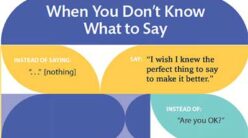1. What does it mean to eat a whole-food, plant-based diet?
A whole-food, plant-based (WFPB) diet means eating mostly minimally processed foods that come from plants—vegetables, fruits, whole grains, beans, nuts, and seeds.
What’s not included? Foods from animals, including meat, poultry, fish, milk, cheese, and eggs.
Definitions of a whole-food, plant-based diet vary. T. Colin Campbell, PhD, initiated the phrase “whole food, plant-based” to better describe the diet used in his research in the late 1970s, which was later reported in The China Study. (His definition also includes avoiding added salt, oil, and sugar.)
Our recipes focus on whole-food, plant-based ingredients—as close to their natural state as possible. We minimize refined foods, such as sugar, honey, oil, and white flour, and emphasize a wide variety of simply and tastefully prepared foods seasoned with salt, herbs, and spices.
2. Is a whole-food, plant-based diet the same as a vegan diet?
In 1944, Donald Watson coined the term “vegan” to describe the ethical avoidance of all animal products, including honey and leather.
As a result of this background, a vegan diet does not necessarily accentuate healthful eating. It can include highly processed foods made without animal products yet loaded with oil, salt, and sugar—such as potato chips, fast food, and Oreo cookies.
In recent years, people who adopted a vegan diet for health reasons often used the terms “vegan” and “plant-based” interchangeably. The current trend prefers the use of plant-based because it is more descriptive and focuses on the positive.
Some people use plant-based in a broad sense, meaning a vegetarian or omnivore diet which includes mostly plant foods plus small amounts of dairy products, eggs, and/or meat.
A whole-food, plant-based diet emphasizes a variety of whole plant foods. Whole means as minimally processed as possible. Think of it as the shortest distance between the garden and the table. Or as Michael Pollan says, “If it came from a plant, eat it; if it was made in a plant, don’t.”
3. Why is a whole-food, plant-based diet a good idea?
Whole-food, plant-based eating is proven to help you live longer, maintain a healthy weight, and lower your risk of chronic lifestyle diseases. Plus, it has a lighter impact on the environment.
Studies show that a low-fat WFPB diet can prevent and often reverse heart disease, type 2 diabetes, and obesity. The high-fiber, antioxidant-rich plant foods reduce cholesterol, blood pressure, blood sugars, and inflammation.
4. Eating a plant-centered diet seems to be the opposite of some weight-loss plans that encourage high intake of meat and eggs. Is plant-based a good option for weight loss?
Most people lose weight when switching to a WFPB diet. Eating whole foods with the fiber left intact fills you up faster. The result is weight loss without feeling hungry, watching portions, or counting carbs or calories.
A recent study investigated nearly half a million people on low-carb diets. Those with the lowest carb intake had the highest risk of cardiovascular disease, stroke, and cancer.
In contrast, according to studies conducted by Physicians Committee for Responsible Medicine, a high-fiber, high-carbohydrate, low-fat diet—such as the WFPB diet—results in significant weight loss, decreased insulin resistance, and reduced risk of diabetes and heart disease.
5. Will I get enough protein on a plant-based diet?
Every plant cell contains amino acids—the building blocks of protein. It’s easy to get all the protein you need from beans, grains, nuts, seeds, and vegetables. Even fruit contains some protein.
The body draws from an amino acid pool to combine the proper proportions needed to construct the proteins for repairing body tissue and many other functions.
When you consume a variety of plant foods, you will get enough protein.
Most American adults consume double the recommended protein intake of approximately 50–60 grams (approximately 2 ounces) per day. More is not better. Surplus protein places a burden on the bones, kidneys, and liver. In fact, excess animal protein has been linked to increased risk of heart disease and cancer.
6. If I don’t eat meat, what am I going to eat instead?
You may think you will have fewer options when you delete meat, dairy, and eggs. Instead, you will find your possibilities expand as you explore a vast array of plant-based options.
Foods such as beans and mushrooms add flavor and texture to entrées. Check your grocery store for minimally processed meat substitutes (especially the ones with short ingredient lists), such as black bean burgers, tofu, tempeh, and soy curls.
7. Won’t I get tired of eating beans?
The high protein and fiber content of beans makes them an invaluable part of a plant-based diet. Here’s a sampling of internationally inspired bean dishes:
Stir-fried vegetables with broiled tofu cubes
Red lentil dahl
Curry with chickpeas
Falafel
Hummus
Pasta with cannellini beans and arugula
Minestrone
Lentil-walnut tacos
Home-cooked beans taste better than canned, so try batch cooking beans in an electric pressure cooker or slow cooker. (Use a hot water soak and drain it off to reduce the gassiness.)
If you are not used to eating beans frequently, gradually add them to your diet to give your gut bacteria a chance to adjust.
8. Will my body get everything it needs if I eat plant-based?
A well-planned whole-food, plant-based diet provides all the nutrients your body needs. The Academy of Nutrition and Dietetics states that a balanced plant-based diet is nutritionally adequate for all stages of the life cycle—even for athletes.
Many athletes, such as Olympic cyclist Dotsie Bausch, have found that switching to a plant-based diet actually improves performance and recovery time.
As with diets including meat, some nutrients require greater intentionality, including omega-3 fats (good sources are ground flaxseed, chia seeds, walnuts, and hempseed), vitamin D (if sun exposure and fortified foods are insufficient, a supplement is recommended), and vitamin B12 (see next question).
If you daily eat greens, beans, nuts, and seeds, you’ll likely get enough calcium, iron, and zinc. Some people prefer to take supplemental calcium.
9. How do I make sure I’m getting enough vitamin B12?
Vitamin B12 is essential for a healthy nervous system and blood cells. Even though it is present in meat, eggs, and dairy products, one in six meat eaters are vitamin B12-deficient, so this is not only a plant-based issue.
Symptoms of vitamin B12 deficiency include fatigue, tingling in the fingers or toes, loss of appetite, weight loss, and soreness of the mouth or tongue. Severe deficiency can cause irreversible neurological damage that looks like Alzheimer’s disease.
People at higher risk of vitamin B12 deficiency include those who are pregnant, lactating, over 65, have gastrointestinal issues, or taking acid-reducing medication or metformin—a medication for diabetes.
Since no reliable natural plant sources of vitamin B12 exist, take a supplement of 50 micrograms per day or 2000 micrograms once a week. You can get some vitamin B12 from fortified foods, such as plant milk, whole-grain cereal, meat substitutes, and nutritional yeast, but usually not enough to meet all of your needs.
10. How do I get started on a plant-centered diet?
If you are new to plant-based eating, you may want to start gradually with Meatless Monday. Then try plant-based meals several times a week. As you find more recipes you like, expand to one plant-based meal a day, then eventually all of your meals.
To help you feel full and satisfied, gradually increase your fiber intake. Full Plate Living (see sidebar) can inspire you with easy high-fiber ideas, such as adding chickpeas or pumpkin seeds to a salad.
Also, try giving yourself a challenge, such as committing to a WFPB diet for 10 days, and then see how you feel. You’ll likely feel so much better that you’ll be motivated to continue.
11. Any tips for retraining my taste buds and cravings?
Do you know someone addicted to broccoli? Neither do I. The addicting foods are usually ultra-processed and high in fat, sugar, and salt.
Change your food environment by getting the addictive foods out of the house. Then focus on exploring and experimenting with all the tastes in the wide world of plants.
The good news: taste buds change.
Although change can be awkward at first, after repetition, soon you’ll adapt to new ways of cooking and eating. In just a few weeks you’ll have a new appreciation for plant foods. And your body will thank you.
Heather Reseck is a registered dietitian nutritionist specializing in plant-based nutrition. See her website, HeatherReseck.com, for recipes and to learn about online cooking classes.






